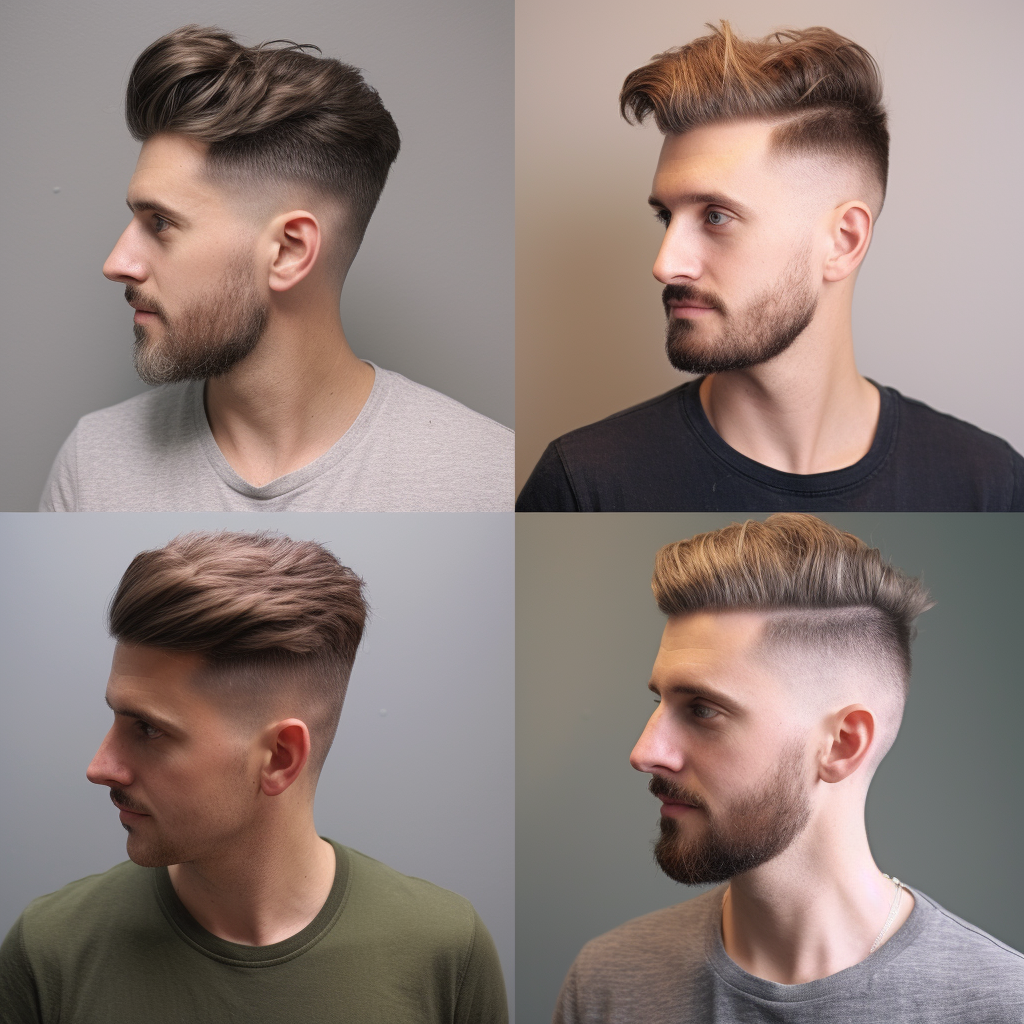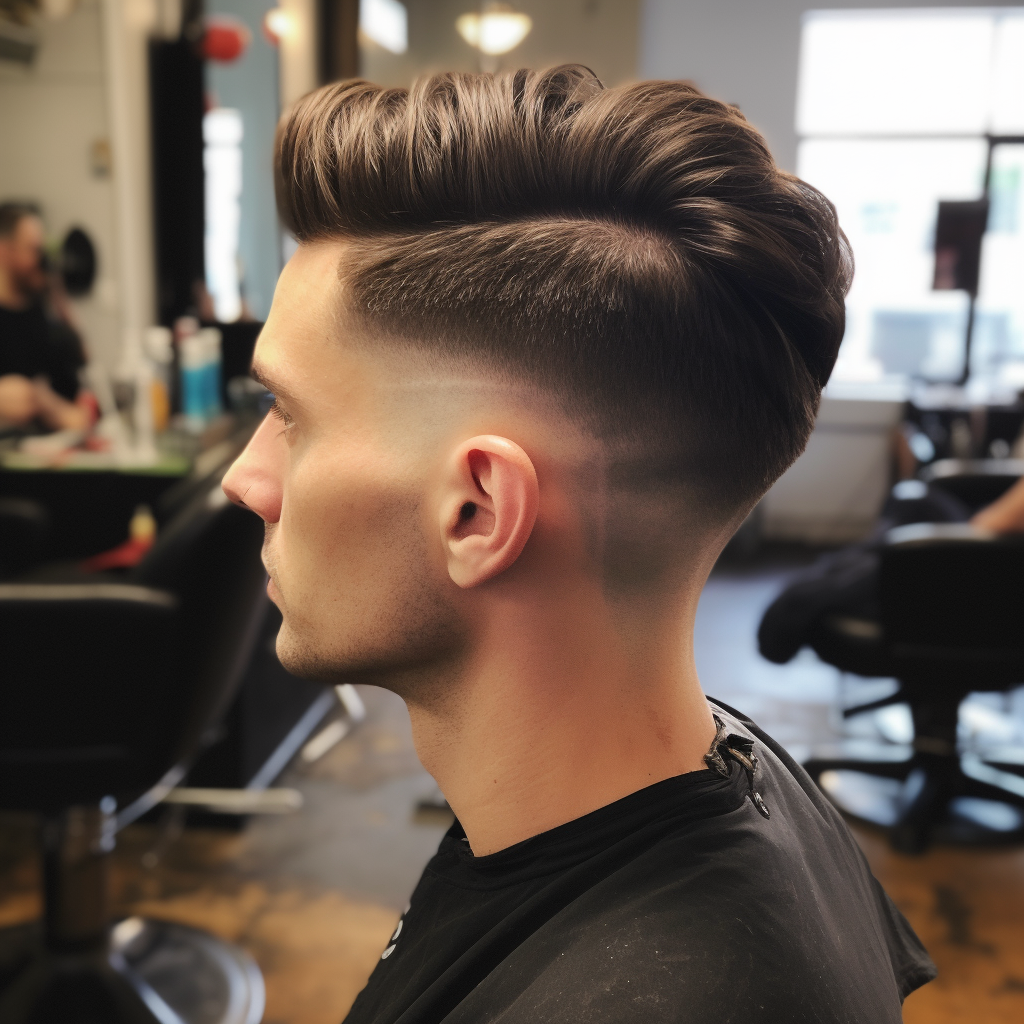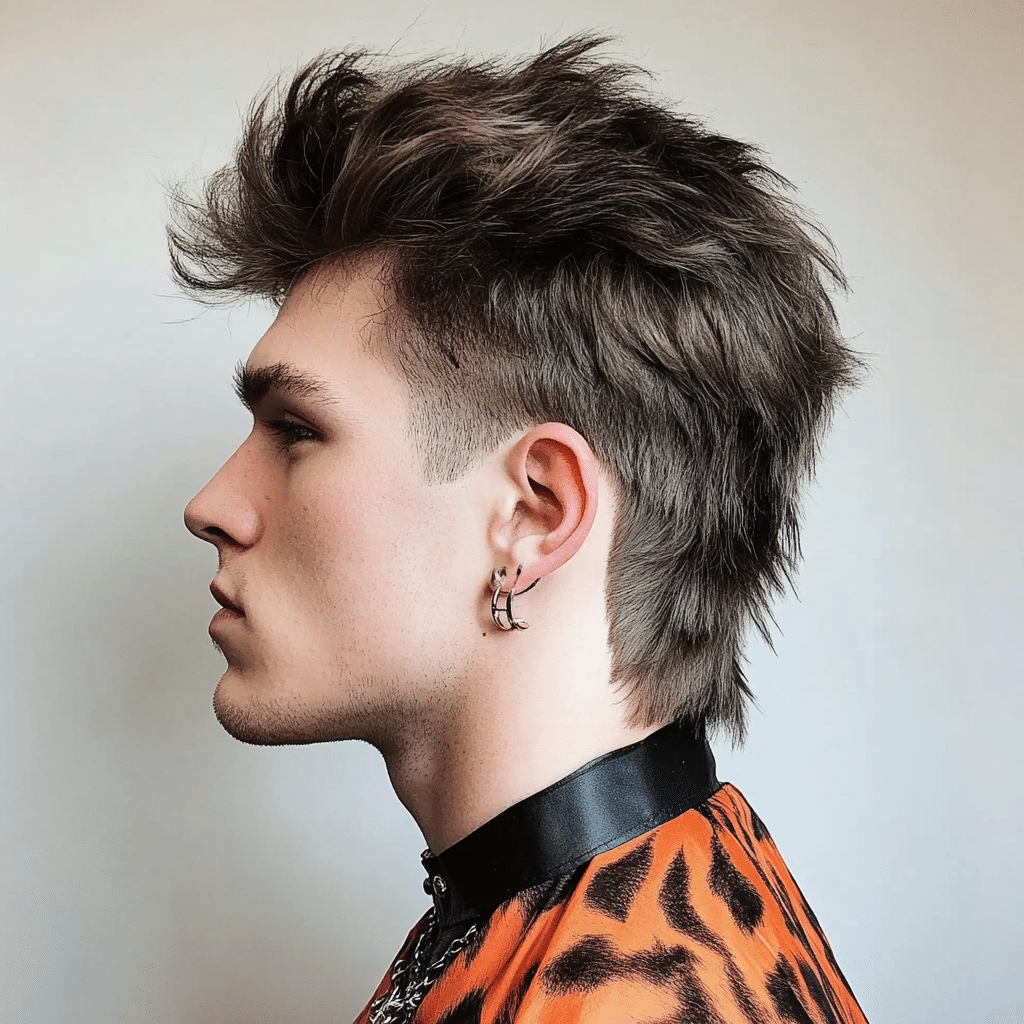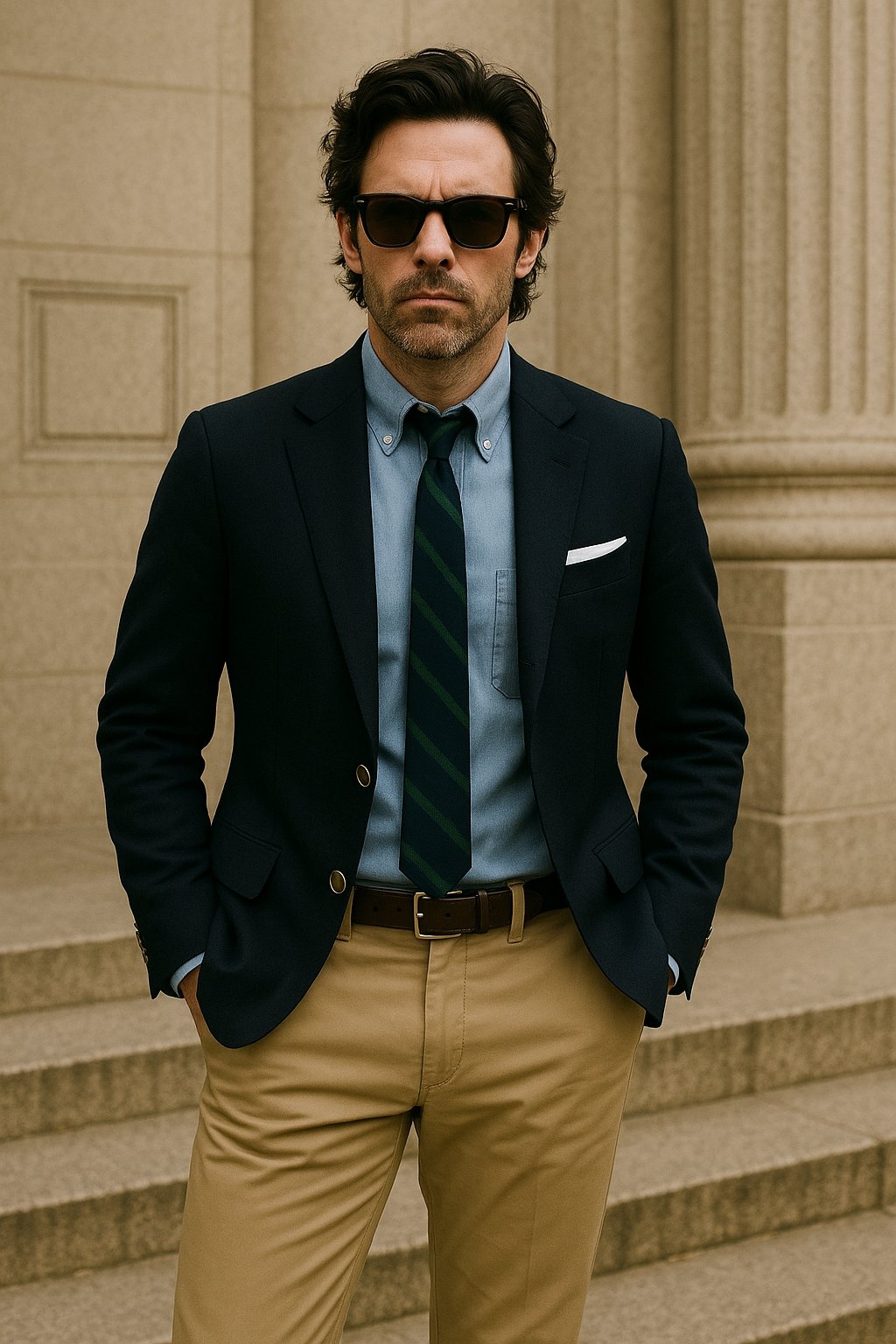The Taper Fade Haircut: A Timeless Trend That Continues to Rise
When it comes to men’s hairstyles, one style that has stood the test of time and continues to be on-trend is the taper fade. The taper fade is a versatile haircut that offers a clean and stylish look suitable for any occasion. In this article, we will delve into the different variations of the taper fade, including the low, mid, and high taper fade, explaining what they are and how to achieve them. We will also discuss why the taper fade remains a popular choice among men around the world.
What is a Taper Fade?
The taper fade is a haircut that involves gradually decreasing hair length from the top of the head to the neckline, resulting in a fading effect. The hair is usually longer at the top and progressively shorter towards the back and sides. This gradual transition provides a sleek and polished appearance that suits a range of hair types and face shapes.
Different Types of Taper Fade Haircut:
- Low Taper Fade: The low taper fade is achieved by maintaining a longer length at the top and gradually tapering the hair shorter towards the neckline. The fade begins around the ear level, creating a subtle and natural-looking transition. This style offers a more conservative and professional appearance while still retaining a modern edge.
- Mid Taper Fade: The mid taper fade strikes a balance between the low and high taper fades. The fading effect starts slightly higher on the sides and back, around the temple area. This variation adds more definition to the hairstyle and provides a clean and polished look suitable for both formal and casual settings.
- High Taper Fade: The high taper fade is the boldest variation of this hairstyle. The fade begins at a higher point on the sides and back, typically around the temple or even higher. This creates a sharp contrast between the longer hair on top and the close-cut sides, resulting in a more edgy and contemporary appearance.


Achieving the Taper Fade
To achieve a taper fade, it is recommended to visit a professional barber or hairstylist who is experienced in executing this style. However, if you’re confident in your own skills, you can attempt it at home. Here’s a general guide:

- Start with clean, dry hair.
- Determine the desired length for the top and the level at which the fade should begin.
- Use hair clippers with different guard lengths to gradually trim the hair, starting with a longer guard and working your way down to a shorter one.
- Blend the fade by using a comb and scissors to taper the hair smoothly from longer to shorter, creating a seamless transition.
- Pay close attention to detail, ensuring the fade is even on both sides and the back.
- Finish by styling the longer hair on top using your preferred techniques and products.

Why the Taper Fade is on Trend
- Versatility: The taper fade offers endless styling options. It can be combined with various hair lengths, textures, and styles, allowing for personalization and creativity.
- Professional and Contemporary: The taper fade strikes the perfect balance between a professional appearance and a modern, fashion-forward look. It is suitable for various environments, whether it’s the workplace or a social gathering.
- Low Maintenance: With a taper fade, you can achieve a sophisticated look without spending excessive time on styling. It requires minimal effort to maintain, making it a practical choice for men on the go.
- Adaptability: The taper fade complements different face shapes and hair types, ensuring that anyone can rock this style with confidence.

The taper fade haircut is a timeless trend that continues to dominate the men’s hairstyling scene. Its versatility, clean aesthetic, and ease of maintenance make it a go-to choice for many men. Whether you opt for a low, mid, or high taper fade, this style will undoubtedly elevate your overall appearance. So, if you’re looking to upgrade your hairstyle, consider the taper fade—it’s a classic that never goes out of style. Check more types of taper fades.

The Mid and High Taper Fades: Versatile and Stylish Haircuts
This style has become increasingly popular among men seeking a sleek, modern look. This haircut features a gradual shortening of the hair from the top down to the natural hairline on the back and sides, blending into the skin. Here’s an overview of the high taper fade, including different combinations and style possibilities:
1. Classic Mid to High Taper Fades:

The classic version is all about simplicity and elegance. The hair on top is left long enough for styling flexibility—typically a couple of inches—and the sides are tapered down to the skin. This style is perfect for a clean, professional appearance and works well with straight or slightly wavy hair.
2. High Taper Fade with Textured Top
Adding texture to the top can give a more dynamic and modern twist to the traditional high taper fade. This can be achieved with styling products like pomades or waxes that provide a matte finish and help in creating volume and movement. This style is ideal for those with thicker, coarser hair.

3. Curly Mid to High Taper Fade
Men with curly hair can also rock a high taper fade that enhances their natural curls. The key is to keep enough length on top to let the curls do their thing while the clean fade adds sharpness and definition. This combination is perfect for showcasing natural texture.

4. Mid Taper Fade with Side Part
A sharp part can be added to create a more structured and detailed look. The part can be on one side, often where the hair naturally separates, and this style pairs well with a pomade to keep the part defined and the hairstyle tidy.

5. Mid to High Taper Fade with Design
For those wanting to make a statement, incorporating a design into the fade can add a unique touch. This could range from simple lines to intricate patterns shaved into the fade. This style is especially popular among younger men and those looking to stand out in a crowd.

6. High Taper Fade with Long Hair
Combining a high taper fade with long hair on top offers a striking contrast and opens up a plethora of styling possibilities, from ponytails to buns or simply letting the long hair flow naturally. This style is perfect for those who like to mix edgy and bohemian vibes.

7. Taper Fade with Beard
Integrating a beard with a taper fade can create a rugged yet refined look. The key to this style is ensuring that the beard is well-groomed and blends seamlessly into the faded sides, which can enhance the jawline and overall facial features.

Styling and Maintenance Tips
- Product Selection: Choose the right styling products based on your hair type. Use lighter products for fine hair and heavier products for thick or curly hair.
- Regular Trims: To maintain the sharpness of the fade, regular trims are necessary, typically every 2-4 weeks.
- Hair Care: Proper hair care, including shampooing and conditioning, is essential to keep the hair healthy and manageable.
The high taper fade is not just a haircut but a foundation on which many different styles can be built, offering something for every man’s style preferences and hair types. Whether you’re going for a subtle, clean-cut look or a bold, creative style, the high taper fade can be tailored to fit your aesthetic perfectly.
Fade Types and Variations
These variations below offer a range of aesthetics, from subtle and clean to bold and edgy, allowing customization according to personal style and hair type. Each type of fade can be tailored to fit the individual’s facial features and desired maintenance level.


- Taper Fade – A classic style where the hair gradually fades into the skin at the temples and nape. It’s more subtle than other fades and works well in professional settings.
- Low Fade – Begins just above the ears and below the temples, blending short hair into even shorter lengths as it moves downwards, subtly emphasizing the hairstyle on top.
- Mid Fade – Starts at the point above the ears, making it more noticeable than a low fade but less dramatic than a high fade. It strikes a balance between subtle and bold.
- High Fade – Begins at a much higher point on the head, near the temples, and quickly tapers down to the skin, creating a stark contrast with the longer hair on top.
- Skin Fade (or Razor Fade) – The hair gradually fades until it completely disappears into the skin. It can be combined with low, mid, or high fades.
- Drop Fade – Features a curve that wraps around the ear and drops lower as it reaches the back of the head, adding a unique contour to the hairstyle.
- Temple Fade (or Temp Fade) – Focuses on fading the hair around the temples, creating a clean, sharp line that frames the face.
- Scissor Fade – Uses scissors instead of clippers to achieve a softer, textured fade that is less structured but still gives a gradient effect.
- Mohawk Fade – A bold combination of a mohawk with a sleek fade, this style tapers from a thick center strip to shaved sides. Ideal for making a striking style statement, it suits various hair types and adds a modern edge to the classic mohawk.
- Mexican Taper Fade: This style is characterized by a gradual tapering of the hair, blending smoothly from longer at the top to shorter at the sides and back. It’s a versatile fade that can be combined with various hairstyles on top, maintaining a classic and clean look.





